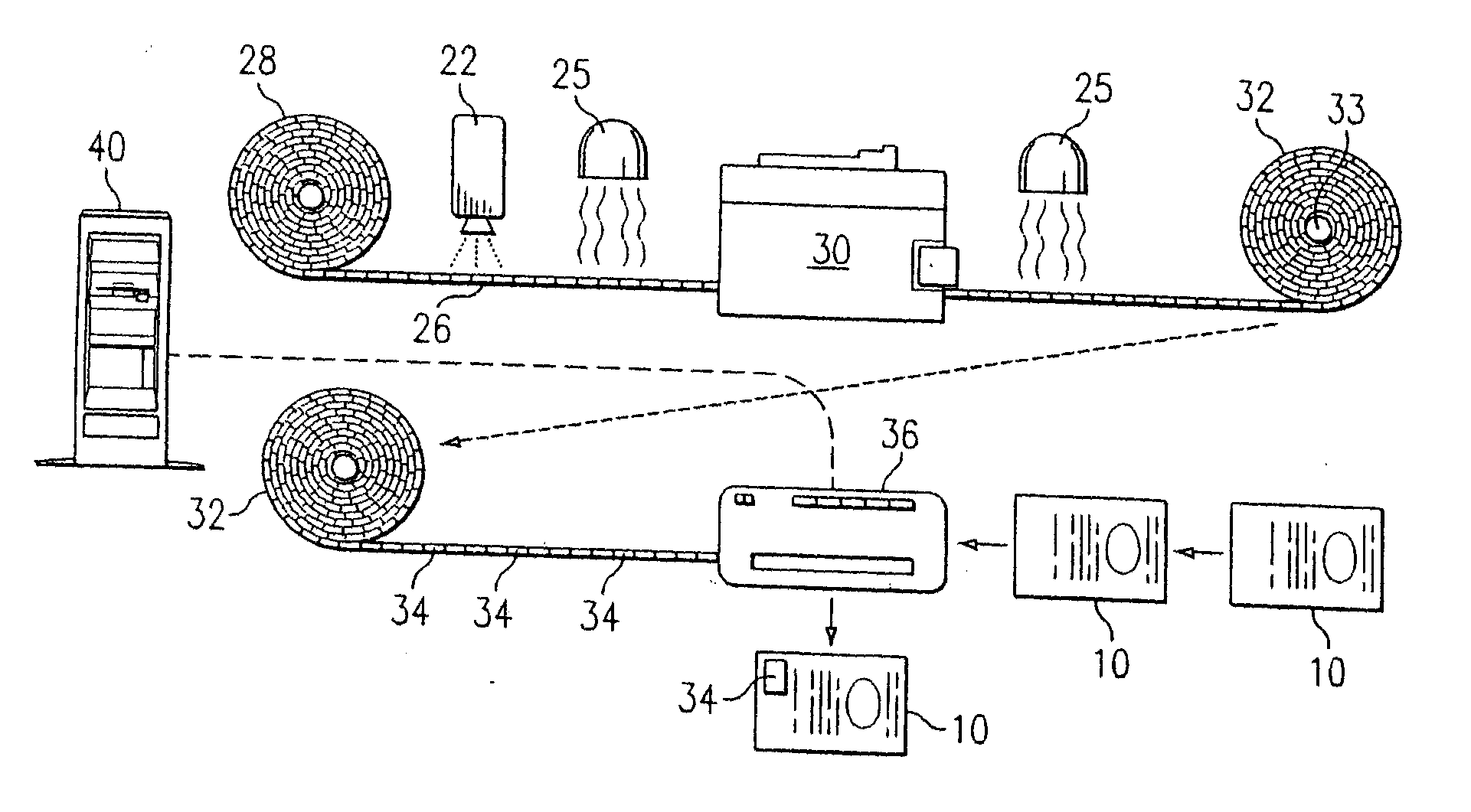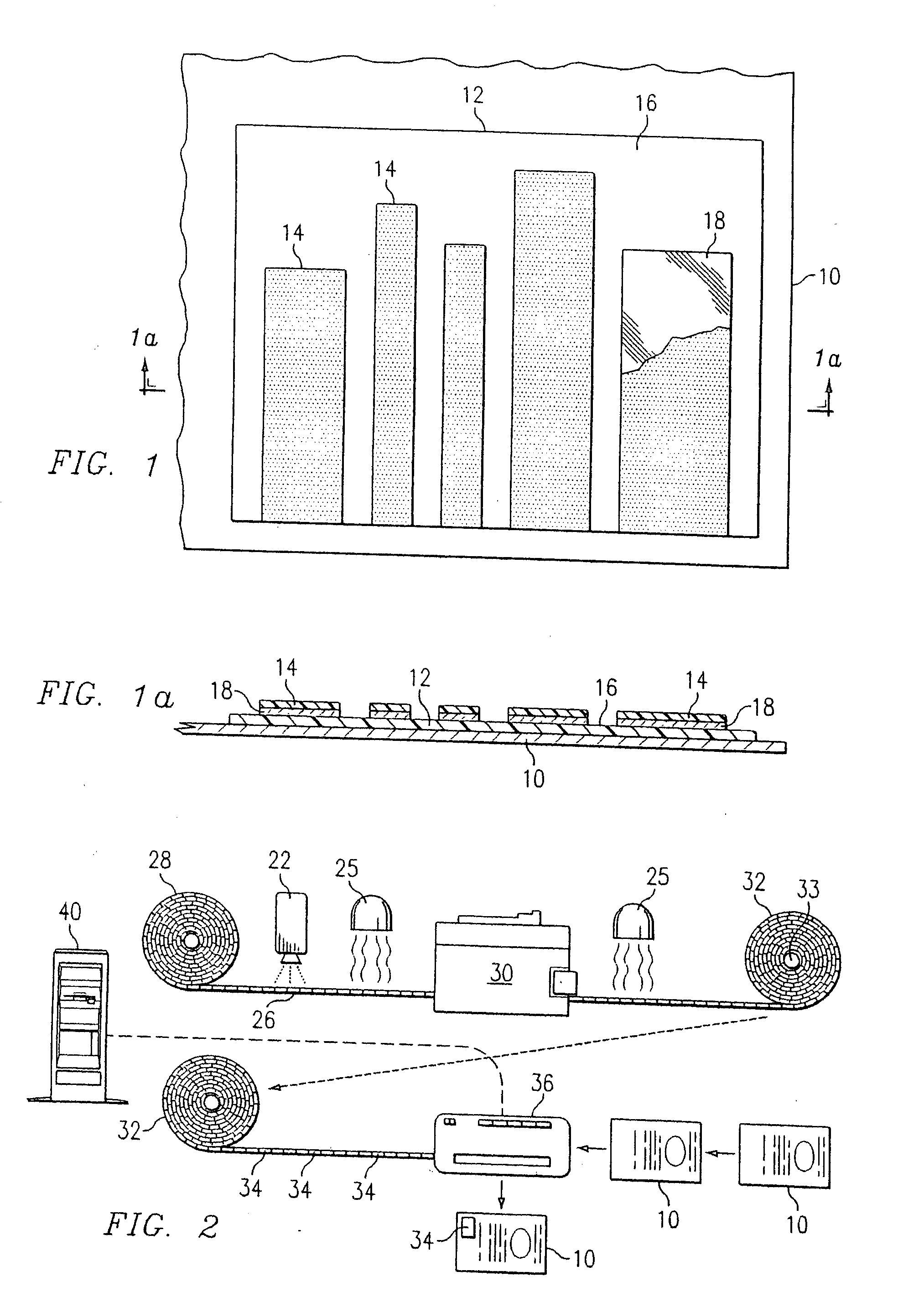Low visual impact labeling method and system
a labeling method and low visual impact technology, applied in the field of low visual impact labeling method and system, can solve problems such as problems that are often encountered, system limitations, mechanical and imaging problems, etc., and achieve the effect of reducing the visual impact of the label
- Summary
- Abstract
- Description
- Claims
- Application Information
AI Technical Summary
Benefits of technology
Problems solved by technology
Method used
Image
Examples
Embodiment Construction
[0033] While the making and using of various embodiments of the present invention are discussed in detail below, it should be appreciated that the present invention provides many applicable inventive concepts which can be embodied in a wide variety of specific contexts. The specific embodiments discussed herein are merely illustrative of specific ways to make and use the invention and do not delimit the scope of the invention. In particular, while the invention is described in the context of mail piece identification and processing, it will be appreciated that the method and system described herein may be utilized in numerous other applications where it is desired to label items for the purposed of identification with minimal impact on the appearance of the article.
[0034] Sunlight and most forms of artificial light are electromagnetic waves whose electric field vectors vibrate in all perpendicular planes containing or orthogonal to the vector which indicates the direction of propag...
PUM
 Login to View More
Login to View More Abstract
Description
Claims
Application Information
 Login to View More
Login to View More - R&D
- Intellectual Property
- Life Sciences
- Materials
- Tech Scout
- Unparalleled Data Quality
- Higher Quality Content
- 60% Fewer Hallucinations
Browse by: Latest US Patents, China's latest patents, Technical Efficacy Thesaurus, Application Domain, Technology Topic, Popular Technical Reports.
© 2025 PatSnap. All rights reserved.Legal|Privacy policy|Modern Slavery Act Transparency Statement|Sitemap|About US| Contact US: help@patsnap.com



